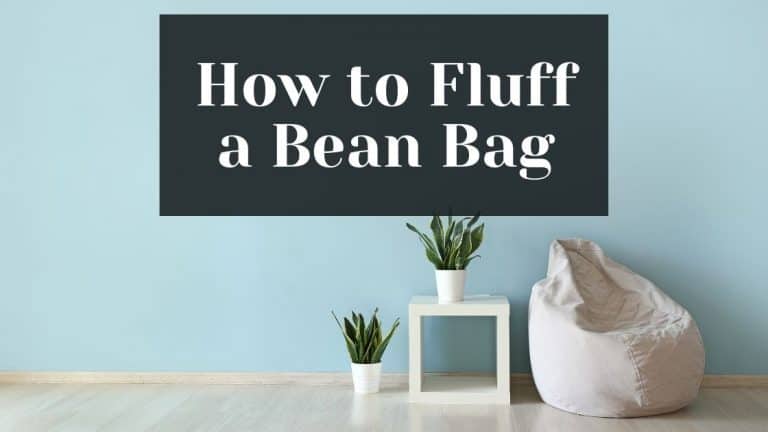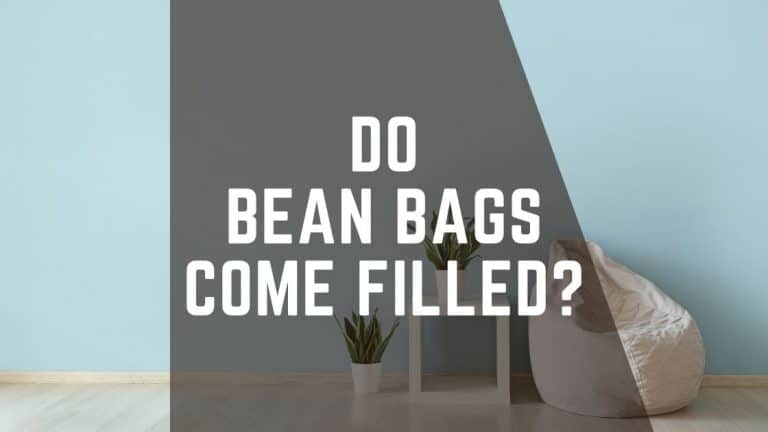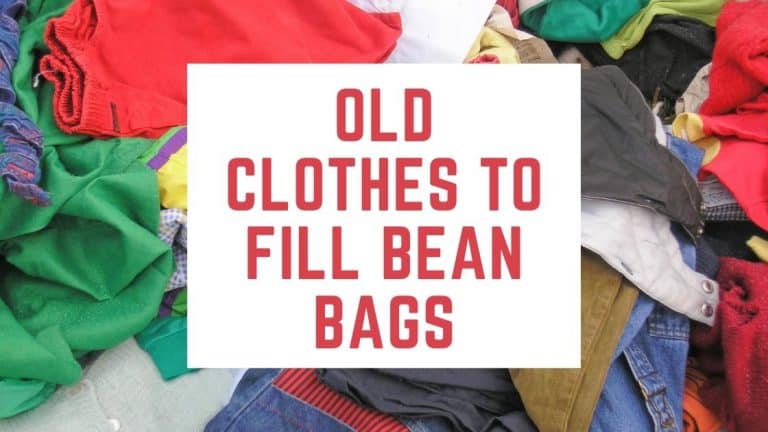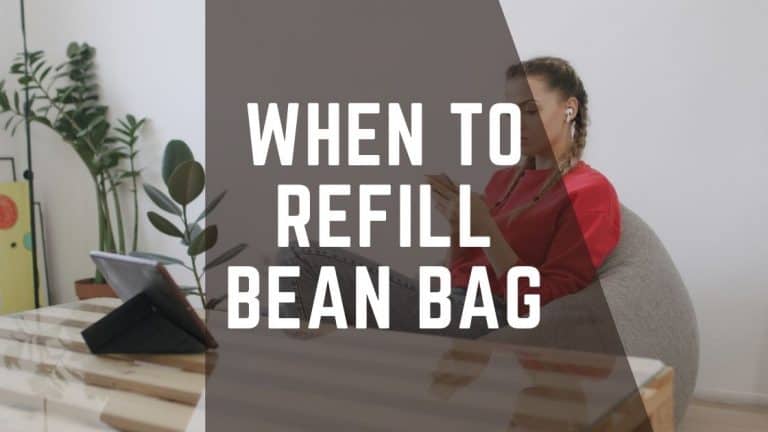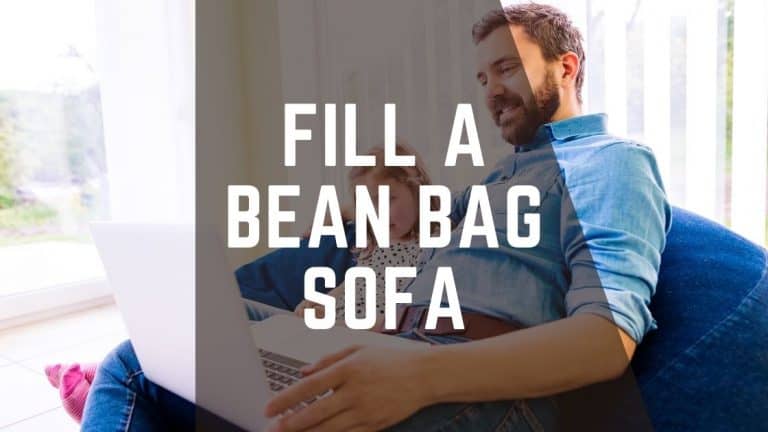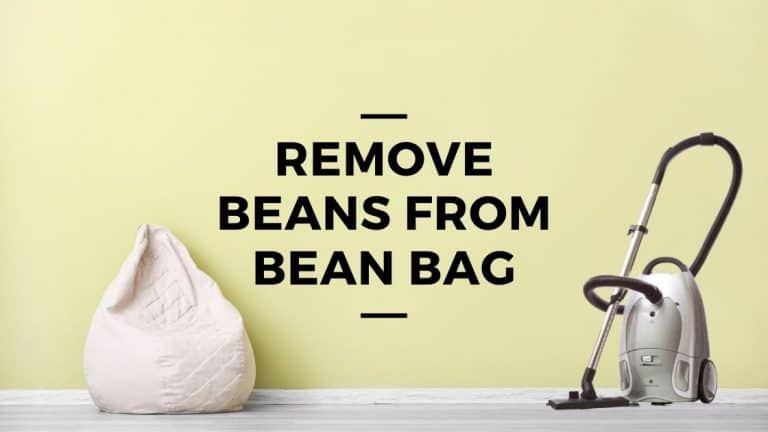Are Bean Bag Beans Biodegradable? – 9 Bean Types Analyzed
Biodegradation is a process carried by microorganisms. They can break down and decompose waste. After decomposition, this waste does not have harmful effects on the environment. So what do you think about the bean bag beans? Are they biodegradable?
Once the materials break down into particles, they release nutrients into the environment. These nutrients recycle again in the natural process.
However, microorganisms can not degrade some synthetic materials. What happens then?
All these materials accumulate on the earth and do not subject to natural recycling. Do you like the earth filled with garbage? That’s why people seek biodegradable products.
Bean bags are filled with different types of fillers. People call them bean bag beans. Expanded polyester beads, cotton, shredded memory foams are widely used filler types. However, due to different chemical and physical properties, these fillers do not react with nature in the same way.
Do you ever see some bean bags include a tag that mentions “zero waste to landfill” or “Free from landfill”? That message delivers the information about the bean type.
Zero landfill means the bean bag beans are biodegradable. These manufacturers not only think about their profit. They also think about the environment. That’s why they take these Zero waste-to-landfill certificates to their bean bag fillings.
However, do you observe the bean bags with the following tags?
- Zero Landfill
- Free from landfill materials
It gives a profound message about bean bag filler type. So, let’s clarify this further.

Table of Contents
- Expanded Polystyrene Beads (EPS)
- Shredded Memory Foam
- Biofoam
- Natural Latex
- Best Biodegradable, Eco-Friendly Bean Bag Fillers
- Final Words
Expanded Polystyrene Beads (EPS)
Due to its lightweight, fluffy feel and durability, most manufacturers use expanded polystyrene balls (Styrofoam) to fill their bean bags. There are tons of EPS beads used worldwide per year.
On the other hand, there are thousand of bean bags or fillers thrown away per day worldwide. So, as EPS is non-biodegradable, they will accumulate in nature.
Also, EPS balls are resistant to photodegrade too. Because of that, it can remain for hundreds of years without any degradation or decomposition.
Thus, it harms the environment. These beads can block the respiratory tract of marine creatures, birds, and other terrestrial animals. So, the effect of these EPS beads is serious.
How do EPS beads accumulate, and why are polystyrene beads not subjet to biodegrade? Let’s check the answer.
Most petroleum-based products like expanded polystyrene beads can not easily biodegrade. The microorganism is unable to break down complex formulas of polystyrene into tiny atoms.
So, due to microorganisms failing to do that task, a considerable amount of EPS beads accumulate in nature.
Therefore, most environmental scientists are researching for a solution to this. However, there is an option to reduce environmental impact. Don’t throw away your EPS beads improperly. Recycle them!
Shredded Memory Foam
Does shredded memory foam biodegradable?
The answer depends on the material that is used to form it. Some memory foams are made with latex, and some are made with polyurethane.
Polystyrene is one type of plastic. So, if any bean bag is filled with memory foam made with polyurethane, it is not biodegradable. However, do not misunderstand this fact. You can recycle them to reduce the environmental effect.
But if your bean bag is filled with memory foam prepared with latex, it is a more eco-friendly option.
Biofoam
BioFoam is a modern filler type that is used in the bean bag industry. It is a 100% organic filler type. Moreover, due to its beneficial properties like lightweight, non-hazardous, hygienic, & durable, it became famous within a short time.
This bio-foam is made by compostable biopolymer that extracts from plants. It is the only vegetable-based foam type in the world. Also, it is not toxic. Hence, it is safe for toddlers and adults, and pets too.
Due to bio-foam made with plant matter, it can easily biodegrade. Hence, give a zero-landfill effect to the environment.
Rather than that, Biofoam is entirely similar to styrofoam beads. Because of these advantages, it considers as a perfect alternative to styrofoam or EPS beads.
Natural Latex
Many people do not believe that latex is a natural material because it is incredibly durable and versatile. But it is prepared with materials that come from rubber tree sap or serum.
This natural latex is biodegradable. Therefore if the bean bag includes this filler, the manufacturer can apply a free from landfill certificate.
Moreover, these 100% organic latex fillers are comfortable and have lightweights. Another best advantage is it is non-toxic. Therefore, this is a safe filler type for toddlers’ bean bags.
Further, it is an excellent choice for those who are looking for eco-friendly bean bags!
Best Biodegradable, Eco-Friendly Bean Bag Fillers
As a responsible human being, it is your responsibility to protect your mother nature! So, besides harmful filler types, you can go for a bean bag made with biodegradable or eco-friendly beans.
What are those?
- Rice
- Dried peas
- Natural beans
- Stones or pebbles
- Sand
- Cotton
- Buckwheat hulls
- Popcorn kernels
If you own bean bags prepared with eco-friendly beans, you have to spend much time maintaining them. However, do not forget these hazards free fillers make your life healthy and ensure nature’s health. Let’s look at their properties a bit deeper.
Cotton
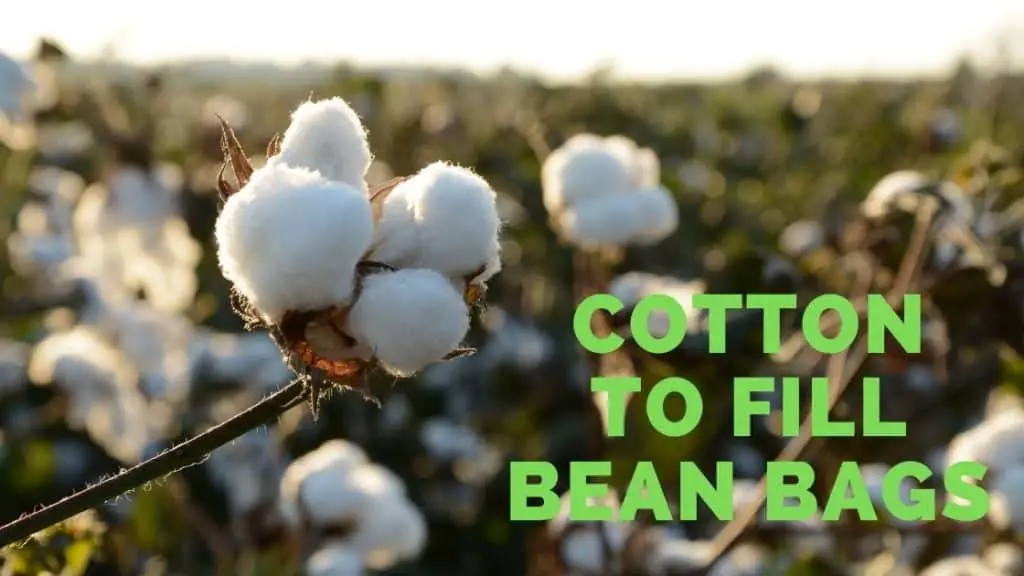
Cotton is a biodegradable material and grows in the cotton plant. People pluck these cotton seeds and produce industrial using cotton types using these raw cotton.
Due to its lightweight and fluffy feel, most people love to lay on the cotton bean bag. Rather than that, it is a non-toxic substance.
Thus, cotton is pretty safe for every bean bag type, especially toddlers’ bean bags. Because of these reasons, people love to add this zero-landfill bean bag filler type to their bean bag.
Wool
Wool is not a widely used bean bag filler type. But some bean bags filled with wool. Moreover, its properties are pretty similar to cotton fillers.
However, natural wool is also biodegradable. Thus, it is a sustainable option for a bean bag filler.
Beans and Rice
Many customers are now opting for alternatives over polystyrene or styrofoam beans. They are looking for eco-friendly bean fillers. So, bean and rice are the best alternatives.
In here, you do not worry about its environmental impact or biodegradable properties. Why do I say so?
Because beans and rice are organic and natural compounds thus, they are biodegradable. However, this biodegradable property can negatively affect the durability or life span of rice and beans.
Because environmental factors encourage microorganism growth, then they start to degrade these natural fillers.
That’s why you should always try to maintain your bean bags properly. And also, that’s why natural bean bag fillers do not have a vast life span. Moisture or humidity can greatly influence biodegradability. So, please keep them in a dry place.
Sawdust, Cedar Shavings
People use cedar shavings, sawdust, or other wood shavings to fill their bean bags. However, these fillers are 100% organic and natural. Due to that, these are decaying with type. So, we can consider these as biodegradable fillers.
However, if you are looking for a natural filler with good durability, Cedar shavings are the best. It lasts for decades. On the other hand, all of these materials give zero-landfill benefit too.
Buckwheat Hulls
Buckwheat hulls are not only used as bean bag fillers but also used to prepare meditation cushions. Moreover, it is 100% organic. Thus, it is subject to the biodegradable process. But these buckwheat hulls have a bit more weight than other fillers like bio-foam.
Final Words
Generally, most petroleum-based products have complex molecular structures. Because of that, microorganisms cannot degrade them naturally.
As a result, tons of waste accumulated on the earth every year. It has thousands of negative impacts on every creature.
Hence, as a solution, most responsible manufacturers go for biodegradable alternatives. Earth is not a garbage bin. It is the only planet that humans can survive.
So, try always to use zero-landfill materials. If not properly recycled, the non-biodegradable materials!
